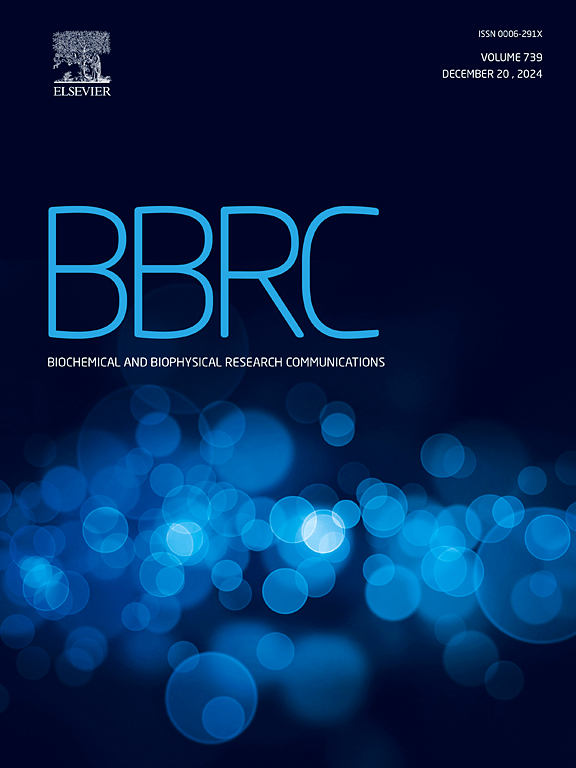Differential toxicity of radiation with different dose-rates between testis and bone marrow cells via the differential regulation of ROS, Ca2+, and mitochondria membrane potential
IF 2.5
3区 生物学
Q3 BIOCHEMISTRY & MOLECULAR BIOLOGY
Biochemical and biophysical research communications
Pub Date : 2025-06-24
DOI:10.1016/j.bbrc.2025.152248
引用次数: 0
Abstract
It is believed that there may be a proportional relationship between the dose-rate and adverse effects of radiation for a given dose. However, we have previously shown that low dose-rate (LDR) radiation induces greater toxicity in the testes than that induced by high-dose rate (HDR) radiation, in contrast to results for the thymic lymphoma induction rate. Since cell/organ toxicity and cancer induction rates may not be directly comparable, we compared toxicities following LDR and HDR radiation between testis/spermatogenesis and bone marrow/hematopoiesis, similar organs/cells in terms of continuously producing progenitor cells. The two organs showed opposite patterns of toxicity due to LDR and HDR radiation, supporting the differential dose-rate effect between the two organs. Furthermore, reactive oxygen species (ROS), Ca2+ and mitochondria membrane potential (MMP) were specifically regulated between the two organs by LDR and HDR. These results suggest that LDR radiation may enhance toxicity specifically in the testes but not in the bone marrow via the specific regulation of ROS, Ca2+, and MMP in single testis/spermatogonia. This report provides the evidence that radiation at different dose rates induces differential toxicity depending on the organ, accompanied by the differential regulation of key cellular parameters, such as ROS, Ca2+ and MMP.
通过对ROS、Ca2+和线粒体膜电位的不同调节,睾丸和骨髓细胞之间不同剂量率辐射的不同毒性
据信,在给定剂量下,剂量率与辐射的不良影响之间可能存在正比关系。然而,我们之前已经表明,低剂量率(LDR)辐射在睾丸中诱导的毒性比高剂量率(HDR)辐射诱导的毒性更大,这与胸腺淋巴瘤诱导率的结果相反。由于细胞/器官毒性和癌症诱导率可能无法直接比较,我们比较了LDR和HDR辐射在睾丸/精子发生和骨髓/造血之间的毒性,这些器官/细胞在连续产生祖细胞方面相似。由于低dr和高dr辐射,这两个器官显示出相反的毒性模式,支持两个器官之间的不同剂量率效应。此外,LDR和HDR在两个器官之间特异性调节活性氧(ROS)、Ca2+和线粒体膜电位(MMP)。这些结果表明,LDR辐射可能通过特异性调节单个睾丸/精原细胞中的ROS、Ca2+和MMP而特异性增强睾丸毒性,而非骨髓毒性。本报告提供的证据表明,不同剂量率的辐射会根据器官引起不同的毒性,并伴随着关键细胞参数(如ROS, Ca2+和MMP)的不同调节。
本文章由计算机程序翻译,如有差异,请以英文原文为准。
求助全文
约1分钟内获得全文
求助全文
来源期刊
CiteScore
6.10
自引率
0.00%
发文量
1400
审稿时长
14 days
期刊介绍:
Biochemical and Biophysical Research Communications is the premier international journal devoted to the very rapid dissemination of timely and significant experimental results in diverse fields of biological research. The development of the "Breakthroughs and Views" section brings the minireview format to the journal, and issues often contain collections of special interest manuscripts. BBRC is published weekly (52 issues/year).Research Areas now include: Biochemistry; biophysics; cell biology; developmental biology; immunology
; molecular biology; neurobiology; plant biology and proteomics

 求助内容:
求助内容: 应助结果提醒方式:
应助结果提醒方式:


